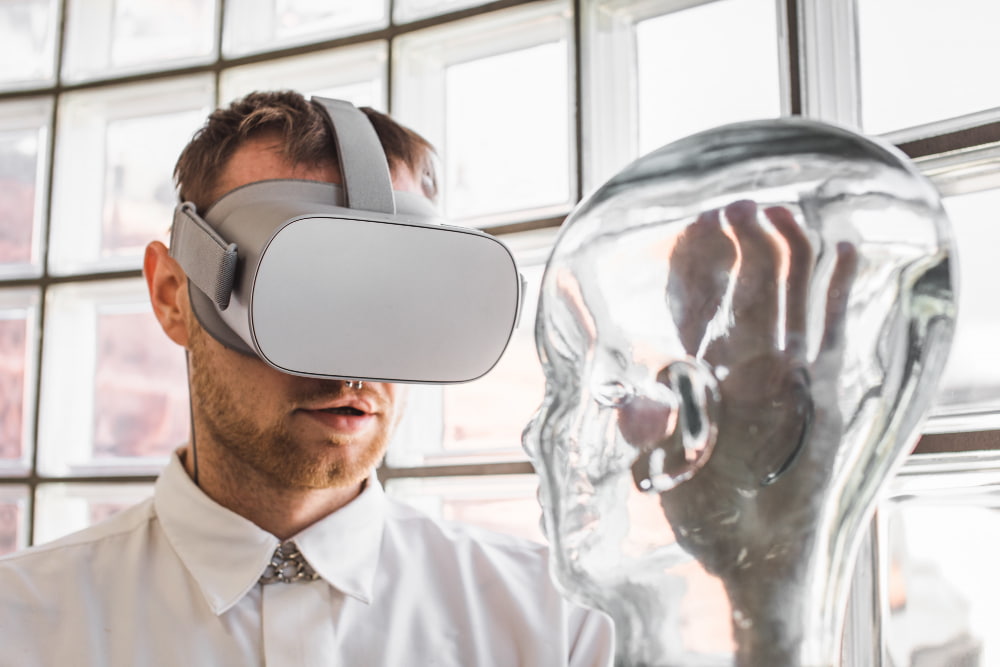The benefits of using VR as a communication channel for businesses
Table of Contents:
Virtual Reality presents tons of possibilities, and even though the media usually describe it solely in terms of technology, the opportunities VR creates in terms of communication are almost limitless. Using VR, you can connect all of your staff in a single environment, where they can all interact with each other and discuss, without actually having to gather together in a single room. But how exactly can you use VR to your advantage as a business owner? And more importantly – how to turn VR into a profit for your company? Let’s find out what the benefits of using VR in business are, especially when used as a communication tool!
Benefits of using Virtual Reality as a communication tool in business
Hold efficient board meetings
With VR, you can easily organize and hold board meetings, without actually having to ever gather your board members in a physical room. This can be especially useful if your board members are located far apart from each other and organizing a physical meeting might be difficult and expensive. In such a case, VR is much more effective at serving as a communication channel than simple communications apps – which tend not to work very well in the first place. With VR, you can actually see your coworkers in a 3D space, interact with them, and create shared projects – without the need of organizing any means of travel. Conferences, meetings, and collaboration spaces can be created effortlessly with the help of Virtual Reality.
Train your staff over long distances
Virtual Reality also proves useful when it comes to training your staff and organizing courses. Similar to how VR conferences work, you can quickly gather large amounts of staff in a meeting space without having to physically bring them all together. However, with Virtual Reality, you can quickly create simulated lifelike scenarios in an active environment, allowing your trainees to experience through practice even more than they would be able to in a physical setting. Creating a practical course with simulated scenarios in real life can be costly – very costly. Using it, you can organize professional corporate VR training at a much cheaper price. Moreover, VR sessions eliminate the risk factor which becomes a problem in some training situations. Research has also shown that using VR in corporate training increases trainee engagement and retention rates, making the training much more efficient.
Virtual Reality can be easily adapted for any industry
VR software can be used in a wide variety of scenarios. A business representative can provide virtual presentations, meeting with clients face-to-face, or train for doing so in a simulated environment, where they can be measured on aspects such as eye contact and behavior. Even the retail industry uses Virtual Reality for staff training, preparing them for scenarios such as the holiday rush. VR gives a sense of presence and scale not possible to achieve with other devices. It can be utilised when constructing buildings or accessing windmills farms optimal placement for increased productivity. Logistical scenarios can be planned beforehand or even errectic an entire production facility, without it even existing yet. However, VR can be used for much more than that. Medical professionals use Virtual Reality to simulate high-risk situations, such as surgeries, allowing them to practice in a lifelike environment without putting themselves – or anybody else – at risk. You can read more about virtual reality in medical training here. Military personnel have also been using VR for years now as part of their training, including flight simulations and battlefield simulations.
Increase your staff’s productivity with VR
What are some other benefits of VR in business? Apart from training, VR can be also used for the actual work done at your company. For example, Virtual Reality can be effectively used for interior and architectural design, providing the designer with all of the tools and space necessary to let their creative juices flow. Unlike regular 3D design software, Virtual Reality actually puts the designer in a 3D environment with which they can interact fully – and it has been shown to produce much better results! While equipping every member of your company with a VR headset of their own can be expensive, some of the newest headsets can be quickly assembled and disassembled at any place, allowing you to simply lend the headsets to your employees whenever necessary. This makes VR not only an extremely effective tool, but it is also one that is not expensive to utilize.
Read also: Don’t Let Long Distances Hinder Your Business – Use VR.

Author: Rafał Siejca
Rafal has over twenty years of corporate experience, including roles at Millennium Bank, Comarch, and leading software teams at PZU, one of Europe’s largest insurance companies. As one of Poland’s few true VR experts with a decade of experience, he ensures timely, high-quality project delivery as CEO and CTO.










